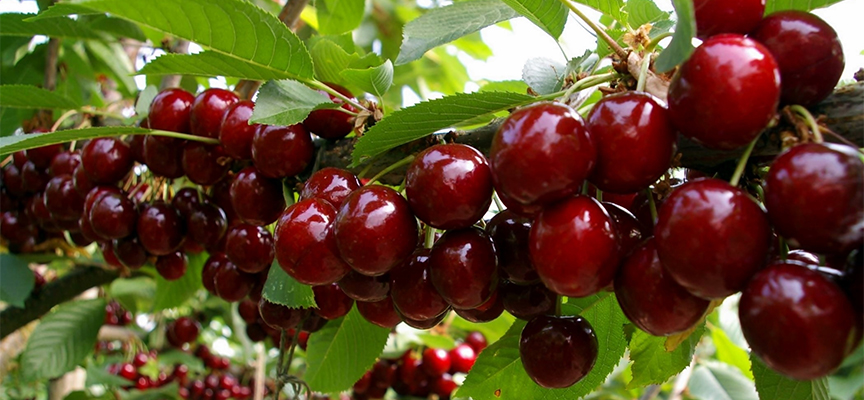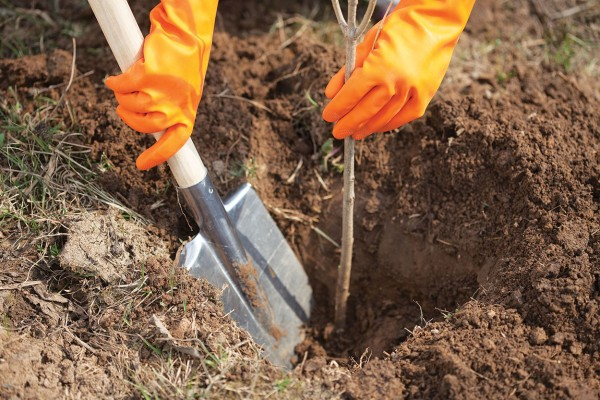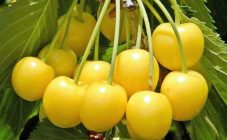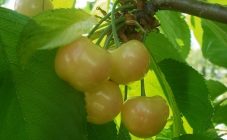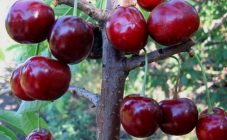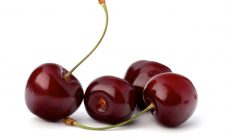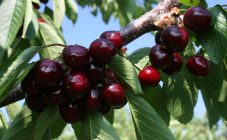Content:
Sweet cherry is a warm and light-loving garden plant, distributed mainly in southern countries. In Russia, cherry orchards are most often found in the south (in the Krasnodar and Stavropol Territories, Rostov, Volgograd, Astrakhan Regions). Recently, domestic breeders have bred many varieties that grow and bear fruit well in more northern regions.
In St. Petersburg and the surrounding area, there is a difficult climate: there are few sunny days, a lot of precipitation. This prevents the cherries from growing well. But the breeders of the Pavlovsk experimental station of VIR have created new varieties that give an excellent harvest even in the conditions of the Northwestern Federal District. These include the Leningrad black cherry. This variety is recommended for growing in humid and damp country climates.
Cherry Leningradskaya black: description and characteristics
Sweet cherry Leningradskaya is a winter-hardy variety of this garden culture. The trees produce good yields almost every season. At the same time, the plants themselves do not grow tall - up to a maximum of 3-4 m in height.
They have dark green leaves, large in size. The berries of this variety are also large, which is a curiosity for a cherry variety for the North-West region. The average weight of a berry is 5 g, but some individual fruits are even up to 7-8 g. The berries have a beautiful burgundy color.
Petioles have a beautiful heart shape. With good care, one adult plant can produce up to 30-40 kg of tasty and sweet berries per season. The fruits ripen in the conditions of St. Petersburg and the Leningrad region relatively early - in the second half of July. In a cold summer, the harvest shifts to the first decade of August.
Sweet cherries of this variety cannot boast of self-fertility, therefore, other pollinating varieties should be located next to it. And it is precisely the cherries that are needed for the northwest. The varieties are the best for these purposes: Leningradskaya red, Leningradskaya pink, Leningradskaya yellow, Michurinka or Tyutchevka. With such a group planting, they will all give a decent amount of berries.
In general, the variety is resistant to diseases and pests, which is also highly valued by amateur gardeners.
Cherry berries of this variety can be used for different purposes. They have shown themselves well in conservation (jam, compotes, juices). Some craftsmen make wines and even medicinal tinctures from the Leningrad black cherry. At the same time, fresh fruits are also good. They contain a huge amount of nutrients. First of all, they will be useful to those who suffer from diseases of the blood and blood vessels. Cherry berries increase the level of hemoglobin in the blood, improve the functioning of the cardiovascular system and normalize blood pressure. In addition, they are useful for the nervous system, kidneys, and gastrointestinal tract.
Cherry Leningradskaya black: planting and further care
Sweet cherry is a thermophilic culture and has a capricious character. That is why the warmest place should be chosen for planting it on the site, especially in the conditions of the Leningrad region. It is strictly forbidden to plant cherry orchards next to other tall trees, otherwise the plant will stretch, which ultimately will affect the quality of the fruits themselves (their number will decrease, and the taste will deteriorate).
Close attention should be paid to the composition of the soil. Sandy loam or loamy soils are better suited. At the same time, they should be neutral-acidic, since cherry does not tolerate strongly acidic soil. Groundwater should be no higher than 1.5 m. It is better to plant cherry plants on slopes, where excess moisture from heavy rainfall will not accumulate, but the slopes should be exclusively southern.
It is advisable to prepare a pit for planting cherry seedlings in the fall, but the planting itself is better done in the spring. The pit is made standard - 60 cm deep and 80 cm wide. If necessary, add compost or humus there. Also, complex mineral fertilizers (50 g of nitrogen, 50 g of potassium and the same amount of phosphorus fertilizers) should be added to the hole. They will feed the young plant in the first 2-3 years of its life.
The seedling is planted so that the root collar is 5 cm above the soil level. After planting, a third of the shoots is cut off from the seedling. This will allow the young plant to deplete less energy at first and to direct them fully to the remaining buds.
The planted trees are watered abundantly. At least one bucket of water is poured onto each young plant, and then mulched. The same compost, straw, grass can be used as mulch. They will prevent moisture from quickly evaporating from the soil.
After planting, painstaking care of the cherries will take place. For the first 3 years, the plants can not be fed with fertilizers, but they still have to be watered. The Leningrad Region is a humid region, so it is often unnecessary to water it. The first watering, as a rule, is given before flowering, the second immediately after flowering, the third during the ripening and pouring of the fruits, the fourth after harvesting. And one more watering is done in September - water charging. It depends on him how well the cherry will overwinter. If it leaves in the winter without enough moisture, then there is a risk of tree death.
In the fourth year after planting, cherries need fertilizers. Two dressings are enough for the whole season. The first time cherries are fed in early spring. At this time, she needs nitrogen, which is found in large quantities in urea and ammonium nitrate. The second feeding is carried out in August. In the last month of summer, perennials are preparing for winter. To cope with the cold and strengthen the root system, they need phosphorus fertilizers, at the same time it is advisable to add potassium as well.
Every spring, the plants are carefully examined and, if necessary, sanitary pruning is carried out - all dry and diseased branches are removed. Trees are also whitewashed and set up trapping belts. In order to prevent the trees from being damaged by pests and diseases, they need to be sprayed with special preparations. The procedure is carried out at the very beginning of spring before flowering. The best for these purposes is karbofos or a spark. After flowering, trees can also be sprayed, but in this case, the above chemicals cannot be used. They need to be replaced with biological ones, for example, fitoverm. It does not contain substances hazardous to the human body, so the berries can be picked and eaten on the third day after processing.
Advantages and disadvantages of the variety
Cherry Leningradskaya black is a high-yielding variety that grows well even in the harsh climate of the Northwestern Federal District. The frost resistance of this cherry variety is high. The variety is not very susceptible to pests and has immunity to many diseases, which not all cherry varieties can boast of. The berries of this variety are large, beautiful and sweet. They are good both fresh and processed. The fruits are perfectly transported.
There is one noticeable minus in the species - it is self-infertile. However, this problem can be easily solved by planting several different varieties of cherries on the site at once (as pollinators). As a result, it will be possible to count on a good harvest not only from the Leningrad black cherry variety, but also from others of this garden culture. At the same time, it is important to follow the rules for growing cherry trees, because these plants love feeding and abundant watering.

